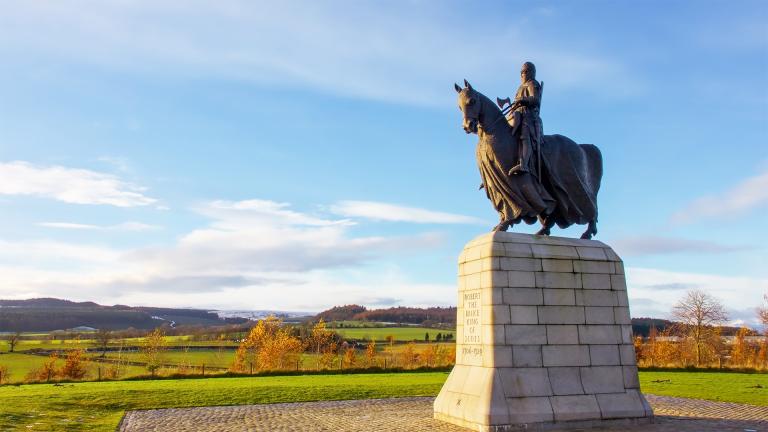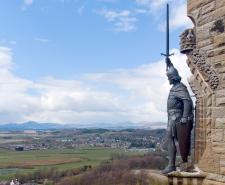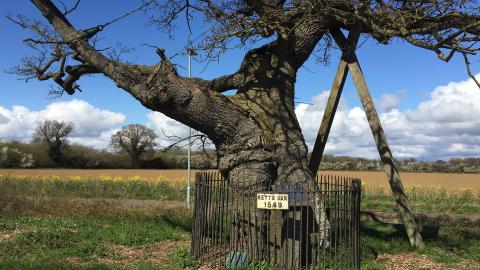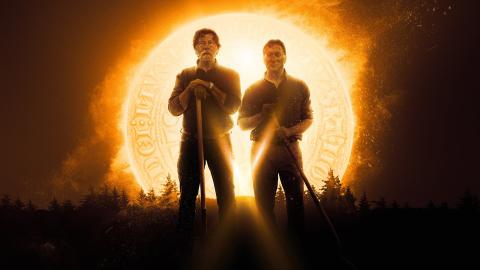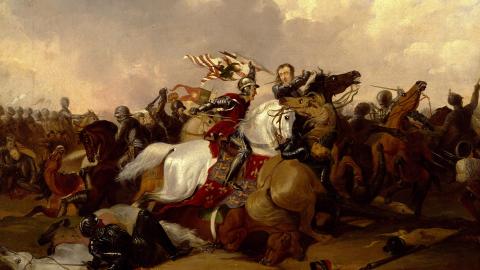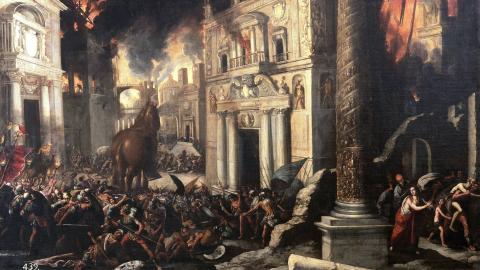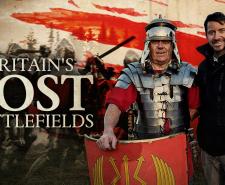
The Battle of Bannockburn: When Robert the Bruce became Scotland's hero
Why is the Battle of Bannockburn one of the most celebrated Scottish military victories ever? The Sky HISTORY series Britain’s Lost Battlefields has answers.
Image: Statue of Robert the Bruce at one of the possible sites of the Battle of Bannockburn | TreasureGalore / Shutterstock.com
History has seen plenty of great military leaders - from Hannibal to Saladin. Such generals have become symbols of national pride for their respective nations.
Undoubtedly the most iconic military leader in Scottish history is Robert the Bruce. His fearsome reputation predominantly stems from the Battle of Bannockburn, where he heroically protected his country’s independence against the invading English in 1314.
There’s a long but fascinating story behind how the Scots and English so dramatically came to blows. So, who led the English army? How did the conflict unfold? How did the battle’s outcome shape British history?
Let’s address all these questions as Sky HISTORY series Britain’s Lost Battlefields goes into even further enlightening detail about what did happen at Bannockburn.
How the English and Scots began their feud
Even these days, there’s something of a friendly rivalry between the English and the Scots. For centuries, it was rather less friendly back in the days when England and Scotland were completely separate, independent countries.
However, it wasn’t always this way. Until the 1290s, the two countries were even allies. So much so that when a succession crisis unexpectedly struck the Scottish monarchy, the Scots sought English help to resolve it.
The crisis was triggered by the deaths of Scottish king Alexander III in 1286 and his child granddaughter Margaret, Maid of Norway in 1290. This left the Scottish throne without a single clear heir, but plenty of eager claimants.
King Edward I of England was asked to arbitrate between the two leading candidates — Robert de Brus (Robert the Bruce’s grandfather) and John Balliol. Edward agreed on the condition that he be given ultimate authority over Scotland.
The Scots, though unsurprisingly reluctant, were coerced into accepting the deal. Balliol was crowned King of Scots in 1292, but provoked Edward’s ire by bringing Scotland into alliance with France. The English invaded Scotland in 1296, starting what would become known as the Wars of Scottish Independence.
The run-up to the Battle of Bannockburn
In the 1290s, the English scored a number of military victories over the Scots, leading Scotland to be essentially conquered by 1304. However, the tables started to turn after Robert became King of Scots in 1306 and Edward I passed away the following year.
To help secure his hold on the Scottish throne, Robert threatened to confiscate the lands of those still loyal to the Balliol family. Robert also ordered his forces to besiege the English-garrisoned Stirling Castle. These two moves enraged Edward II, prompting him to summon thousands of soldiers with which to march upon Scotland.
Robert the Bruce outsmarts Edward II
Historians agree that the English-allied troops outnumbered those at Robert’s disposal, even if the exact numbers remain unclear. In any case, the English army is thought to have had a much higher proportion of cavalry.
Robert worked this to his advantage by trapping Edward’s soldiers in an area where they would lack enough space to launch cavalry charges. The battlefield’s exact location is unknown to this day, but thought to have lied near the Bannock Burn stream just south of Stirling.
The Scots also assembled their troops into square formations known as 'schiltrons'. Traditionally, these were used strictly for defensive purposes. Robert’s innovation at Bannockburn was to use schiltrons offensively, with his men’s pikes effectively piercing (or scaring off) the English cavalry at close range.
The resulting bloodbath saw English bodies fall far more quickly than Scottish ones. Bannockburn was unusually long for a medieval battle, taking place over two days.
At the end of the first day, a member of Edward’s army defected to the Scots to let them know that English morale was low. Surely enough, at the end of the second day, Edward fled the battlefield with his tail between his legs.
How Bannockburn shaped British history
Today, Bannockburn is still seen as one of European history’s most important medieval battles. It arguably played a big part in helping the Scots to keep the English at arm’s length for the rest of Robert’s reign.
For example, historian Helen Carr has suggested that Bannockburn contributed to Edward II’s deposition in 1327. The ensuing regency for the young Edward III agreed to recognise Scotland as fully independent.
Nonetheless, tensions between England and Scotland would regularly flare up again until the Act of Union 1707 formally united the two countries.
Fascinated by military history? We’ve got plenty of documentaries on that subject. To learn what else we are set to add to our already impressive content library, subscribe to the Sky HISTORY newsletter.
